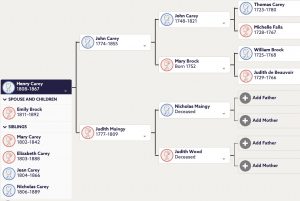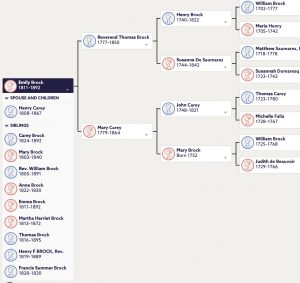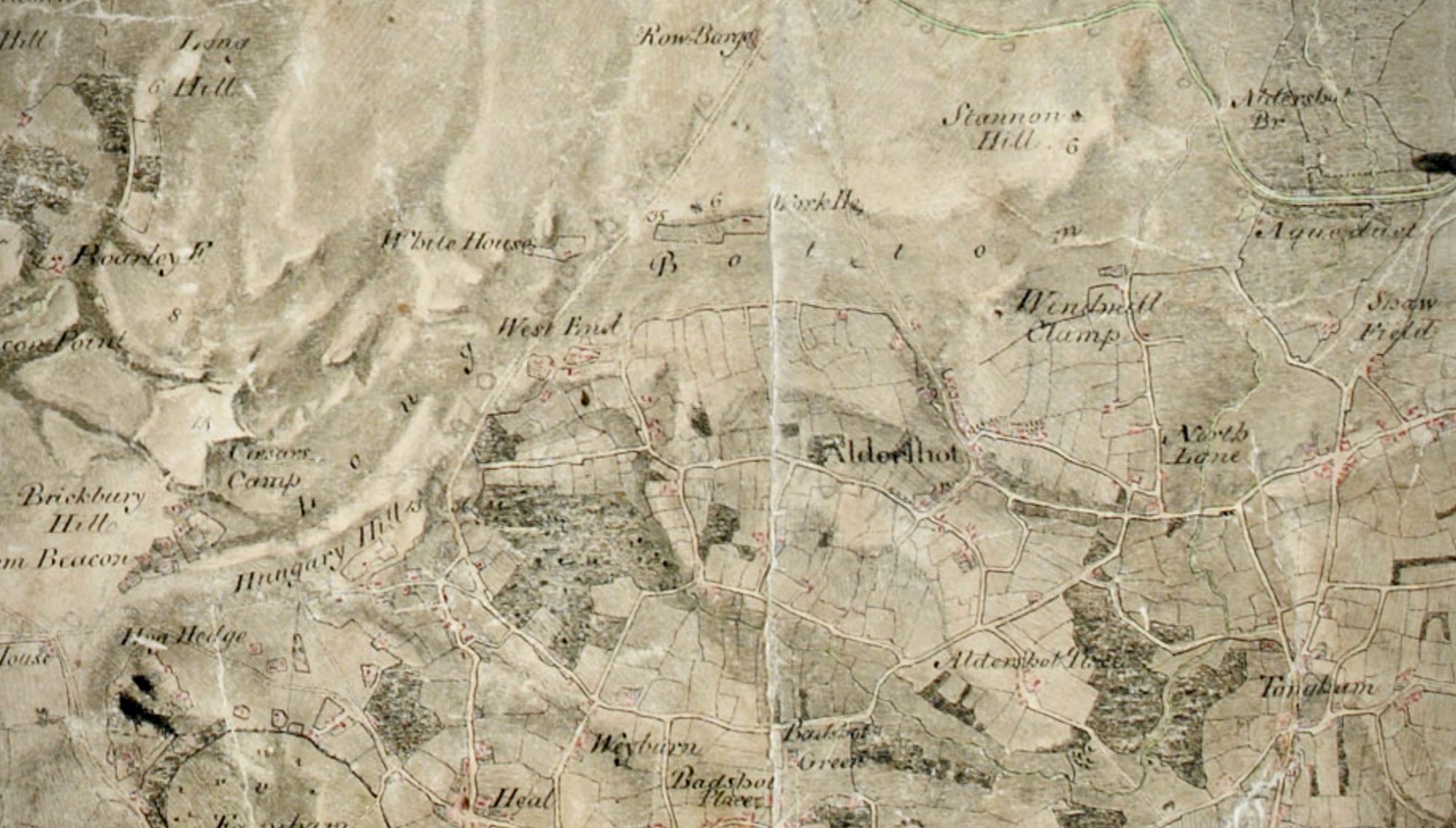The Reverend Dr Henry Carey became curate at Aldershot in October 1838, the year of the Coronation of Queen Victoria. He arrived too late to save many of the parish papers that were used as kindling for that celebratory bonfire in June.
Henry Carey and his wife Emily came from Guernsey. They may have been held in some regard as gentry and would have been amongst the best educated in the village. She was the daughter of a renowned clergyman from Guernsey and Henry was an Oxford graduate with a doctorate. He had recently published a biography of his father-in- law, the Reverend Thomas Brock who had been the Rector of St Pierre-du-Bois until his recent passing at age 73 in December 1850.
At the time of the 1851 Census Reverend Carey had one male and two female servants in his household, all in their twenties. The eldest as William Barnett, Mrs Elstone’s younger brother. Also then in the household was Alfred J de Mesurier, aged 16, explicitly stated as a pupil, born in Guernsey. His father was Abraham le Mesurier, a banker and farmer in Guernsey.
The curate had also supplementing his income through tutoring youths from his native Guernsey in 1841. Then there were four teenagers in the household, Carey Brock (his wife Emily’s younger brother, aged 16), William Newnam (15), Farquharson Kerny (13) and Frances Spaight (14). Harriet Stonard and Harriet Chuter (20) were listed as servants.
Henry and Emily were first cousins, both born in Guernsey. Their shared grandfather was John Carey of Choisi. He had been an elected Jurat of the Royal Court of Guernsey, although dismissed with all other Jurats in a dispute with the Bailiff in the 1770s.
Emily was one of twin daughters, born in 1811. Mary Carey. Her mother was the daughter of John Carey of Choisi and sister to Henry’s father, also called John Carey, a physician by profession.
Henry was born in 1808, the youngest of four with two sisters and two brothers. His eldest brother John (‘Jean’) Carey had married and was father to nine children when, in 1851, he was a freeholder of land in Guernsey.

His sister Mary died unmarried in 1842. His brother Nicholas had stayed on in his father’s household in Guernsey, recorded by the 1841 Census as of independent means; in 1851 and 1851 he had taken lodgings in the parish of HolyRhood, Southampton, recorded as proprietor of land in Western Australia. By 1871, Nicholas was back, still unmarried, in the family home in Guernsey. (James Dennett was also recorded in that parish in 1851, in the household of the Rector, Rev. Wilson.)
Their mother Judith was buried in 1809 before Henry’s first birthday, suggesting birthing complications. It is quite plausible that his father’s sister Mary would, therefore, have played some role in his upbringing. That would suggest a closeness that Henry would have had for his cousin Emily, three years his junior, whom he would later marry. His father married again in 1815, resulting in some younger half-siblings. Henry’s father was still alive in 1853, then aged 79. (Is there mention of Henry in his father’s will in 1855?)
Emily’s parents raised at least nine children. She and her twin sister Emma were born after Mary and William.

William and Emily’s three other brothers followed in her father’s footsteps by joining the Church, a process facilitated by the visit made to Guernsey by Bishop Charles Sumner in 1829.
Bishop Sumner, had begun a systematic programme of reform including visits to each parish every fourth year, preceded by the collection of statistics. He had completed his visitations of clergy and churchwardens in Hampshire and Surrey during the previous year. The Channels Islands also formed part of his diocese and he travelled there by the steamer “The Lightning’ in the autumn with his wife and their eldest two children accompanied by two chaplains.
-
- The Channel Islands had been brought formally into the diocese of Winchester by an Order of Council in 1569 during the reign of Elizabeth. The rule of the Bishops had proved ineffective, Guernsey also favouring the side of the Parliamentarians during the English Civil War. The authority of the Anglican Church was reinstated in 1663 after the Restoration. However, there had not been a visit by an Anglican Bishop until that of the Bishop of Salisbury in 1818, sent there by 77-year old Bishop Brownlow-North. This was Bishop John Fisher who coincidentally was the Bishop who had ordained Charles Sumner as a priest the year before in the Quebec Chapel in Marylebone in March 1817.
At some stage after setting foot on Guernsey, Bishop Sumner stood as godfather to Emily’s youngest sister, who was baptised as Frances Sumner Brock. Sadly, she died the following year, an event which might have created a bond between the two families.
Emily’s elder brother William had been made a deacon by Bishop Sumner in July 1828, was later ordained by him in December 1829. William was awarded a post as stipendiary curate (£80 p.a.) near Winchester, later moving to HighClere (£100 p.a.) before being appointed in 1833 as Rector of Bishops Waltham. That was where he was in 1851, married with four daughters and a very large household.
Henry Carey and Bishop Sumner might also have met at that visit by the Bishop of Winchester to Guernsey in 1829, although his subsequent career was not as stellar as Emily’s brother William, at least in terms of lucrative Church positions. He took his degree at Worcester College, Oxford and was ordained deacon by Bishop Sumner in July 1832, also then made a stipendiary curate (having the profits of the benefice) in Corhampton, midway between Winchester and Portsmouth, to which in December was added Crawley (£90 p.a.) located at the other side of Winchester. He was ordained as a priest at Farnham Castle in July of the following year, 1833. He was then aged 25 years old.
Henry and Emily were married in November, despite being first cousins; there is no record of their having any children.
